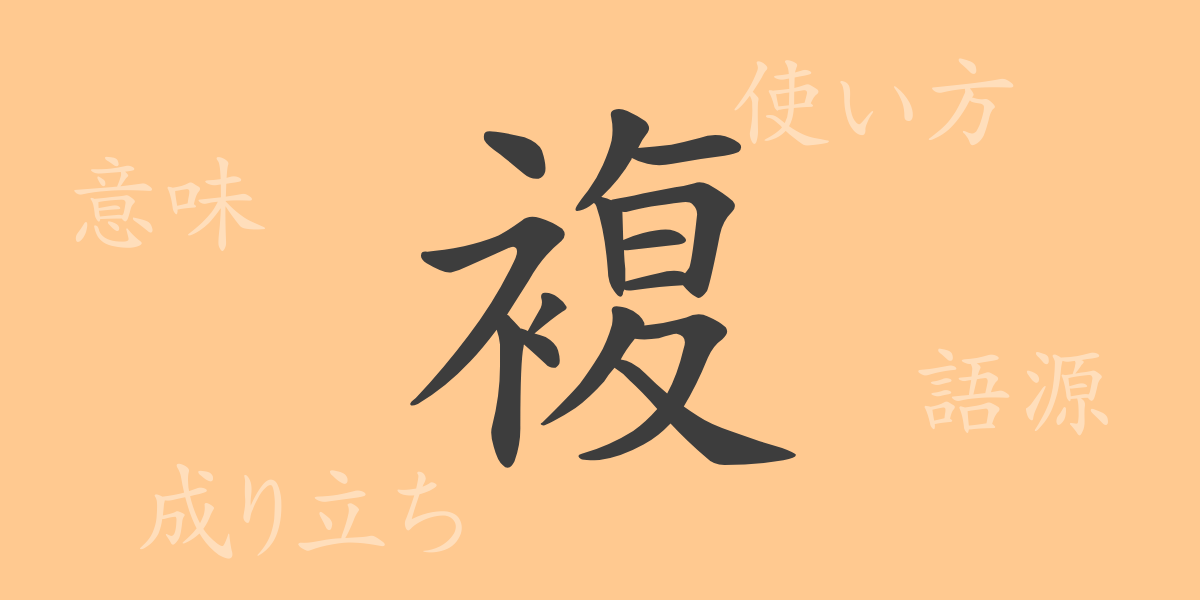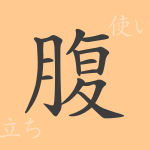In Japanese writing, kanji (漢字) are known for their complexity and rich meanings. The character “複” (ふく, fuku) is one of the commonly used kanji and can be seen in various contexts. This article delves into the history, meaning, usage, and role of the character “複” (ふく, fuku) in the Japanese language.
Origin of 複 (ふく, fuku)
The kanji “複” (ふく, fuku) is composed of “衤” (ころもへん, koromohen), which means clothing, and “复” (またがしら, matagashira), which means two. In ancient China, clothing was made by layering, which led to meanings such as layering and complexity. Over time, this kanji has been used in various meanings beyond the concept of layering, such as duplication and multiplicity.
Meaning and Usage of 複 (ふく, fuku)
The kanji “複” (ふく, fuku) means “to layer,” “to double,” and “complex.” In Japanese, it is used in words like “複数” (ふくすう, fukusuu), “複合” (ふくごう, fukugou), and “複雑” (ふくざつ, fukuzatsu) to indicate layering or combining things. It also refers to making another copy of the same thing, as in “複製” (ふくせい, fukusei).
Reading, Stroke Count, and Radical of 複 (ふく, fuku)
Let’s take a closer look at the readings and components of the kanji “複” (ふく, fuku).
- Reading: The onyomi (音読み, on’yomi) is “フク” (ふく, fuku), and there is no kunyomi (訓読み, kun’yomi).
- Stroke count: It has a total of 14 strokes.
- Radical: The radical is “衤” (ころもへん, koromohen).
Idioms, Phrases, and Proverbs Using 複 (ふく, fuku)
There are many idioms, phrases, and proverbs in Japanese that include the kanji “複” (ふく, fuku). For example, “複雑怪奇” (ふくざつかいき, fukuzatsu kaiki) describes something intricate and difficult to understand, and “複線的” (ふくせんてき, fukusenteki) indicates that something has multiple elements or developments. Additionally, expressions like “一石二鳥” (いっせきにちょう, isseki nichou), which means achieving two results with one action, also use this kanji.
Summary of 複 (ふく, fuku)
The kanji “複” (ふく, fuku) has a wide range of meanings and uses from its formation to the present day. In Japanese, it is frequently used to express redundancy and complexity, enriching the language’s meaning. The words containing “複” (ふく, fuku) often appear in daily life and business contexts, making understanding this kanji important for smooth communication.

























